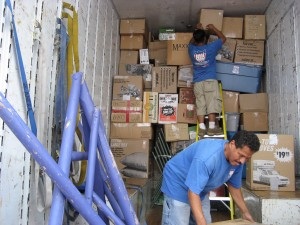As the volume of content on the internet continues to expand at jaw-dropping rates, it’s getting harder and harder to attract an audience.
And yet, publishers and brands are investing heavily on churning out new pages. The Washington Post publishes 1,200 new content assets every day, 500 of which are articles prepared by their in-house editorial team. Across the entire web, according to estimates from Internet Live Stats, over 4.3 million blog posts go up each day. Keeping up with that kind of competition volume is a bit of a non-starter.
What’s more, traffic referred from search, which was once considered to be the most attainable and most effective audience acquisition channel, is likewise becoming harder to attain. Depending on the user’s search term, geolocation and device, Google’s monetized SERPs are likely to aggregate fewer than 10 organic, non-personalized results. Regardless, social media is driving more traffic to content pages than search.
One recent study conducted by Boost the News found that 74 percent of new articles hit their traffic peaks on the same day they’re published, followed by 25 percent the following day.
Long live the king
“Content is king,” as the mantra goes, but where’s the ROI on publishing pages that are basically useless after less than a week? Why do you have to keep feeding fresh meat to the content beast if you’re not going to get anything in return? The answer is that you don’t.
Sure, it’s probably a good idea to publish new material on a regular basis, but don’t forget to also make the most of your older content assets. Regularly update that which is outdated, and upgrade that which is laggardly. Promote and repurpose that which stands the test of time.
By extending your content’s shelf life, you’ll be able to maximize your discoverability, while at the same time giving your investment in these assets a fighting chance at performing. Here’s how.
Determine what assets are ripe for life extension
Start by auditing the content that’s currently up on your site, deciding which pages should be unpublished, updated, upgraded, promoted or repurposed.
If you have old content that’s no longer relevant in any way to your ideal audience, then just go ahead and unpublish it. Content marketing is about quality, and if something isn’t helping you, there is no need to have it live. You don’t need anything unnecessarily slowing down your website and turning off readers.
Content that relates to old products or services that you no longer offer, job listings and previous employee information are some obvious things that can be taken down. Before you delete these unnecessary materials, though, set up 301 redirects so that people who head to the old URLs get forwarded to newer, updated pages with relevant information.
For example, when visitors try to access a job listing that’s no longer open, you can direct them to your updated careers page, where they can learn more about all of your current openings. This allows for longer time on site and can lead to increased brand awareness, trust and loyalty.
Update and upgrade
Spend some time reviewing your page performance metrics from the past. Were there any articles that should have been major performers but never lived up to their potential? Anything that was once a powerhouse, but audience interest dwindled?
Pages like these need your attention. Spend some good hours updating the talking points in your content to reflect the latest trends and information. Research your long-tail keywords and use these phrases organically within the content, to ensure that Google recognizes the usefulness of your page to the people who would benefit from it most.
Add visuals and subheaders to make the page more inviting. Cite some statistics to back up the arguments you make. Quote and link to experts who write about the topic at hand, so you’ll have a chance of obtaining some powerful ego-baited backlinks.
Google’s algorithms favor domains with an ongoing flow of fresh content, but they also favor pages that were published recently. To update your content without sacrificing its seniority benefits, make sure that the new version sits on the same URL as the old.
Using this powerful tactic, one recent experiment yielded a 66-percent lift in organic traffic to old blog posts.
Drive traffic to your evergreen assets
While page views don’t directly impact search rankings, on-site engagement signals can help holistically. By keeping people clicking around your content archives, your bounce rate will plummet, and by promoting your content to new audience members off-site, you’ll effectively also boost your site’s organic social shares, which also indirectly help with SEO.
Use your email list and your social media profiles to promote your best older content. For maximum email click-through performance, set up a series of rich content guides that are specific to topics, and then assign each topic to an audience segment.
Much of your content, particularly text-heavy blog posts or long webinars, can likely be atomized into short-form content optimized for your various social channels. You can create highly engaging graphics on tools like Canva and share content that’s relevant to your specific audiences on each channel. For example, knowing that videos perform well on Facebook, infographics perform well on Pinterest and listicles perform well on Twitter can help you distribute evergreen content with posts that will help maximize engagement.
The best part is, once they’re set up, social posts promoting your evergreen assets can easily be automated for periodic recurrence using an app like Hiplay.
Beyond email and social, CodeFuel offers a solution that helps site visitors discover content that’s both relevant and related. The system curates content for promotion via automated topic tagging, ultimately increasing time on site and giving your evergreen content the attention it deserves. CodeFuel’s metrics also allow you to easily see what content is performing best and where the biggest opportunities are for updating and monetizing pages.
No, repurposing content won’t kill your rankings
Well, it depends. It’s true that Google will penalize duplicate content, so you definitely don’t want to create a new blog post or section on your website with the exact same text or metadata that already appears elsewhere. However, syndicated content, especially when the original has had a chance to get indexed and when syndicated versions include canonical tags, poses zero SEO danger. Google is usually smart enough to recognize the oldest instance as the one that should rank, and it simply ignores the others.
That being said, there are many formats in which you can leverage to atomize your content assets. For example, a section from a text-heavy blog post could be turned into a video, infographic, slide deck or podcast episode. These are great ways to maximize your digital footprint and reach new audiences.
Podcasting is especially powerful in this regard. Since podcasts are favored by on-the-go people who don’t necessarily have time to look at your website or read your blog content, they represent a huge opportunity. All you have to do is record someone reading your old blog posts in a personable way, and you have your first episode. With new tools like Anchor, you can easily record yourself, share your content, and grow your audience.
One of the best examples of content repurposed for multi-platform promotion is Jay Today, an initiative of Convince & Convert’s Jay Baer, who published a short spoken word video, in eight different formats, for 149 episodes before he pulled the plug on it last summer. Each video clip was uploaded to iTunes, Medium, LinkedIn Pulse, Baer’s own blog and more.
Nine lives for your content
Enough with the volume game. It’s time to get serious about maximizing the life cycle of each and every content asset that you produce. Even if you end up publishing fewer new articles as a result of these efforts, you’re likely to still come out ahead.
Focus on quality, and don’t forget the opportunities you can find in your archives. When you think strategically about publishing ROI and repurpose, upgrade and promote your content, the benefits are huge. You’ll spend less on production, improve your SEO rankings and reach new audience members.













